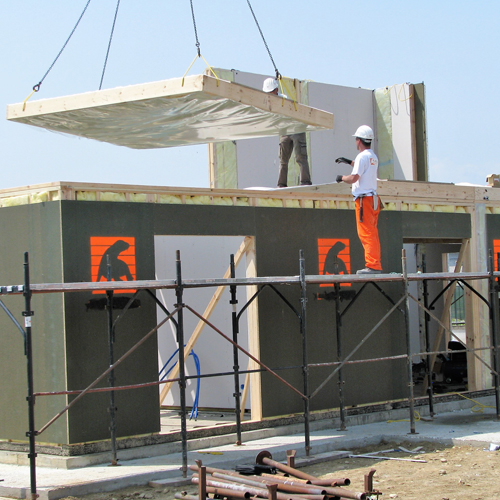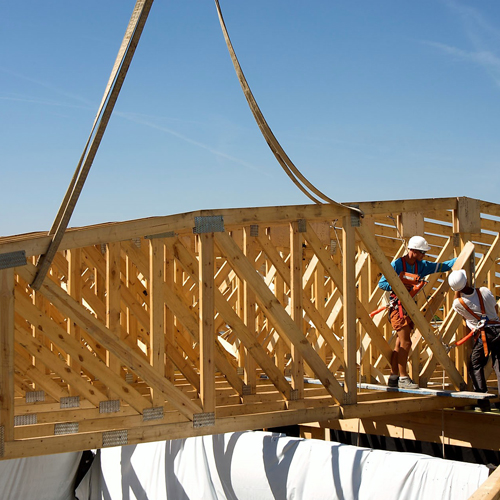The Timber frame or wooden frame system is among the most common for building construction with one or multi floors. The system consists of walls and floors composed of wooden elements of small cross-sections. These elements are placed at a distance of 40-60 cm between them. Structural wood panels are attached to one or both sides of these elements, using nails or screws of a small diameter. The walls and floors thus created are attached to each other and to the foundation with metal angular plates, bolts, screws, and nails.
Insulation inside the timber frame completes the construction package of the walls. The insulating layer placed inside can take all the thickness. In this case, the technological systems are laid inside the insulation. La Foca produces a structure composed of layered elements, where each material is strictly eco-compatible and free from harmful emissions. Furthermore, the cutting-edge technologies reflect new regulations concerning seismic safety, guaranteeing complete stability of the structure.
ADVANTAGES OF THE TIMBER FRAME
The timber frame structure is generally more flexible, with greater freedom in modifications, permitting the structure to be more easily assembled or modified even during construction.
The timber frame technique is currently the most ecological in use because less material is needed, which, so there’s less waste. Less wood and less glue is used in the wooden frame house. Its production (of the house), therefore, consumes less primary energy. The wood used is FSC certified (organization established to promote the responsible management of the world’s forests. The FSC does this by setting standards on forest products, along with certifying and labeling them as eco-friendly.)
The insulation inside the frame gives an additional advantage that result in a significant reduction in the thickness of the finished wall and thereafter an increase in usable space. The earthquake-resistant data of the timber frame wall is excellent thanks to the lightness of the material compared to a masonry or reinforced concrete. Wood is excellent structural material and characterized by high relationships between strength and density. It’s subject to reduced seismic accelerations and also enjoys an excellent ductility that guarantees the possibility of energy dissipation of cyclical actions because of a seismic event.


THERMO-ERGOMETER PERFORMANCE:
- THERMAL INSULATION: Thanks to the insulation inside the load-bearing structure, the frame wall has excellent performance while obtaining high thermal insulation, with consequent energy saving.
- ABSENCE OF THERMAL BRIDGES: The outer coat, applied uniformly on all the perimeter walls, involves an absolute absence of thermal bridges, limiting the annoying formation of mold and condensation in the structures. In this case, the air-tight casing will also be of fundamental importance, especially during the laying of the walls at the building site so that the internal air of the dwelling does not come into direct contact with external air thus avoiding interstitial condensation .
- TRANSPIRATION: the very dense surface of the wall frame allows a slow transmigration of humidity towards the outside from any possible water vapor accumulations through the wooden frame.
- ACOUSTIC INSULATION: Thanks to the inherent porosity of the wood, the frame walls offer excellent sound insulation, making wood the ideal construction material for residential buildings and more.
EXECUTIVE SPEED
Thanks to the prefabrication technology used for the structures (walls, floors, roofs, etc.) together with the installation and finishing of the walls already inside them, allows construction times to be among the lowest on the market. As a result, a finished building (turnkey) is delivered in only 4-6 months.
APPLICATION FIELDS
- Houses over 4 floors
- Extensions of existing building
- Elevations of existing building








